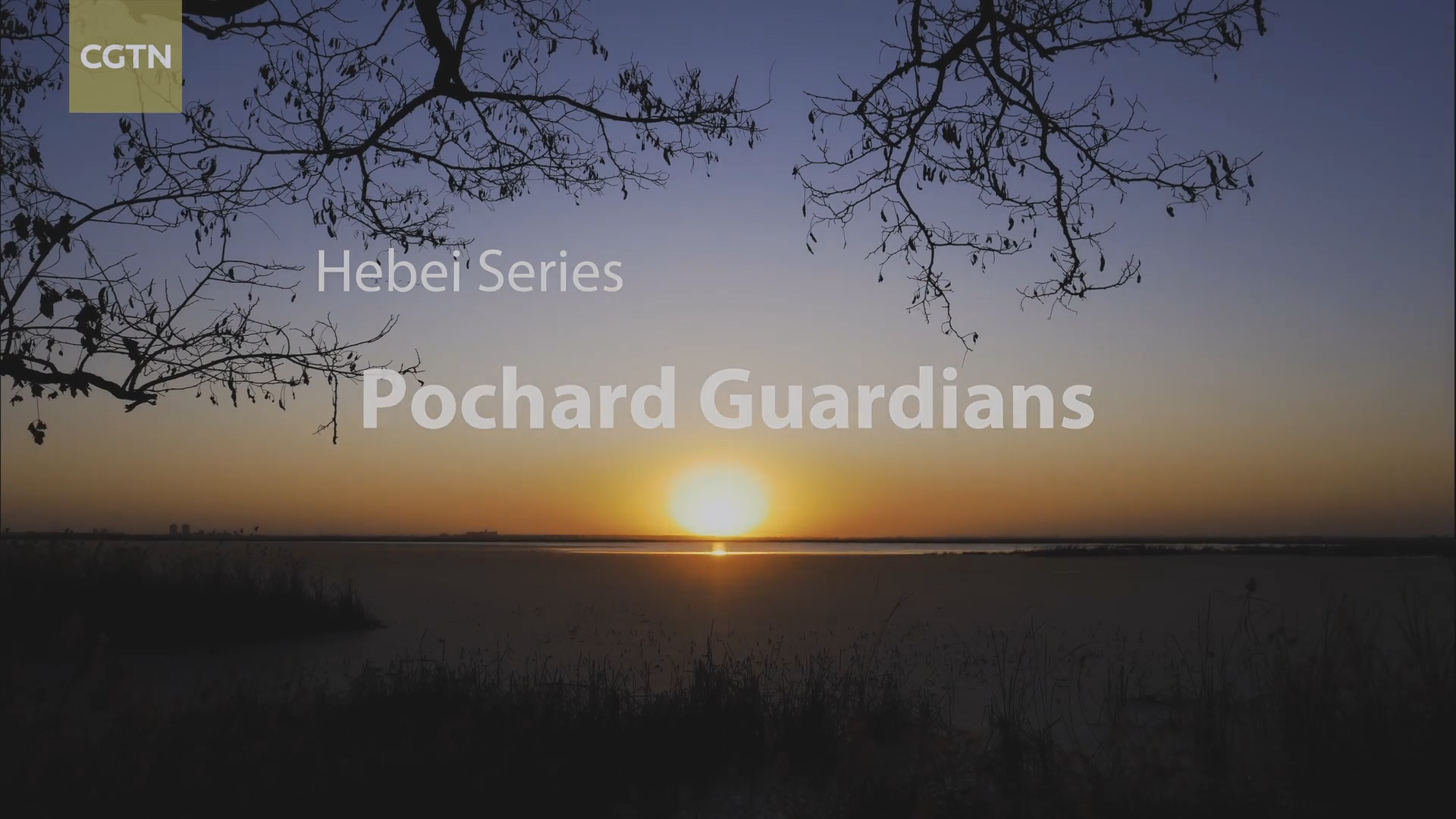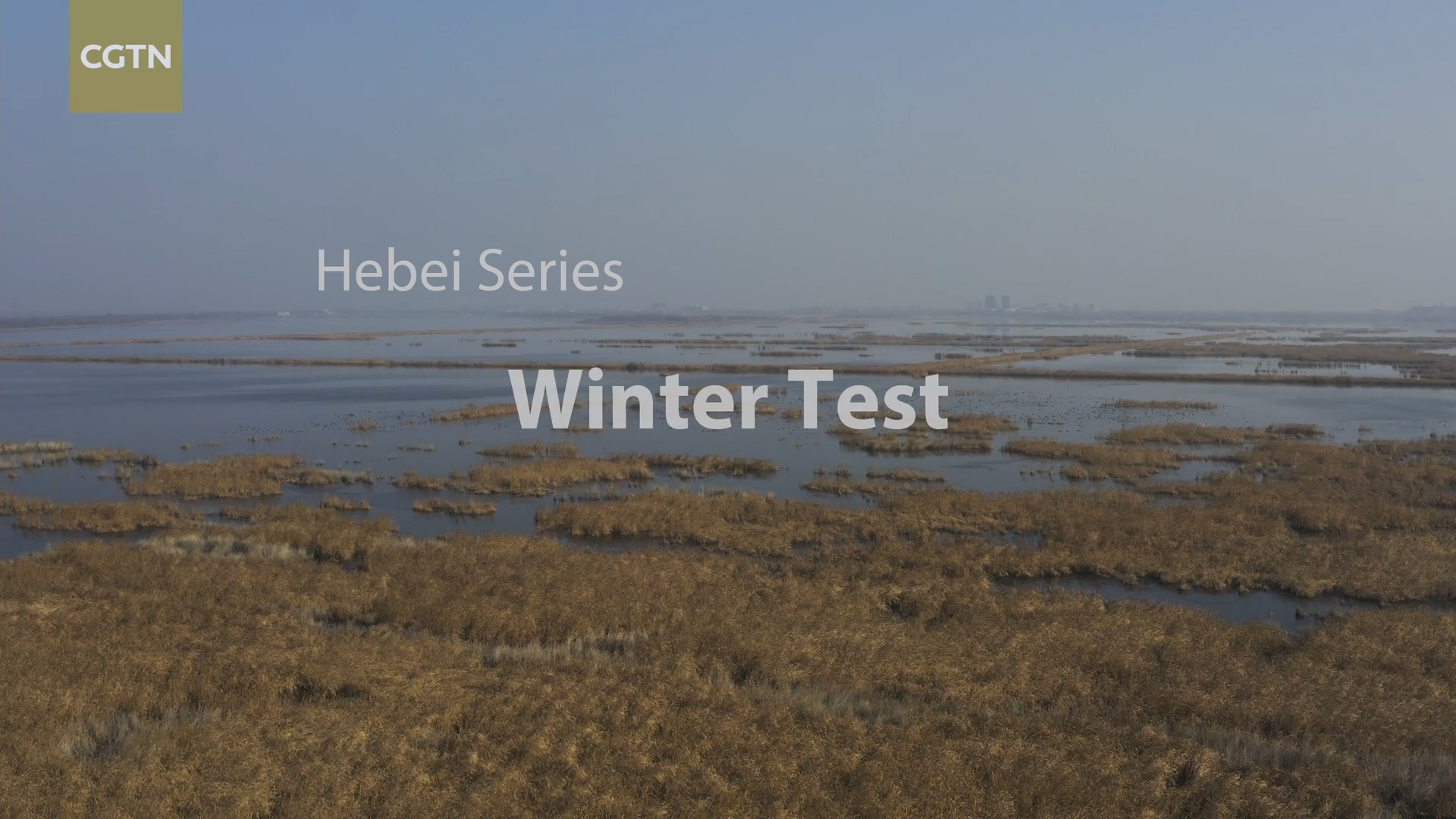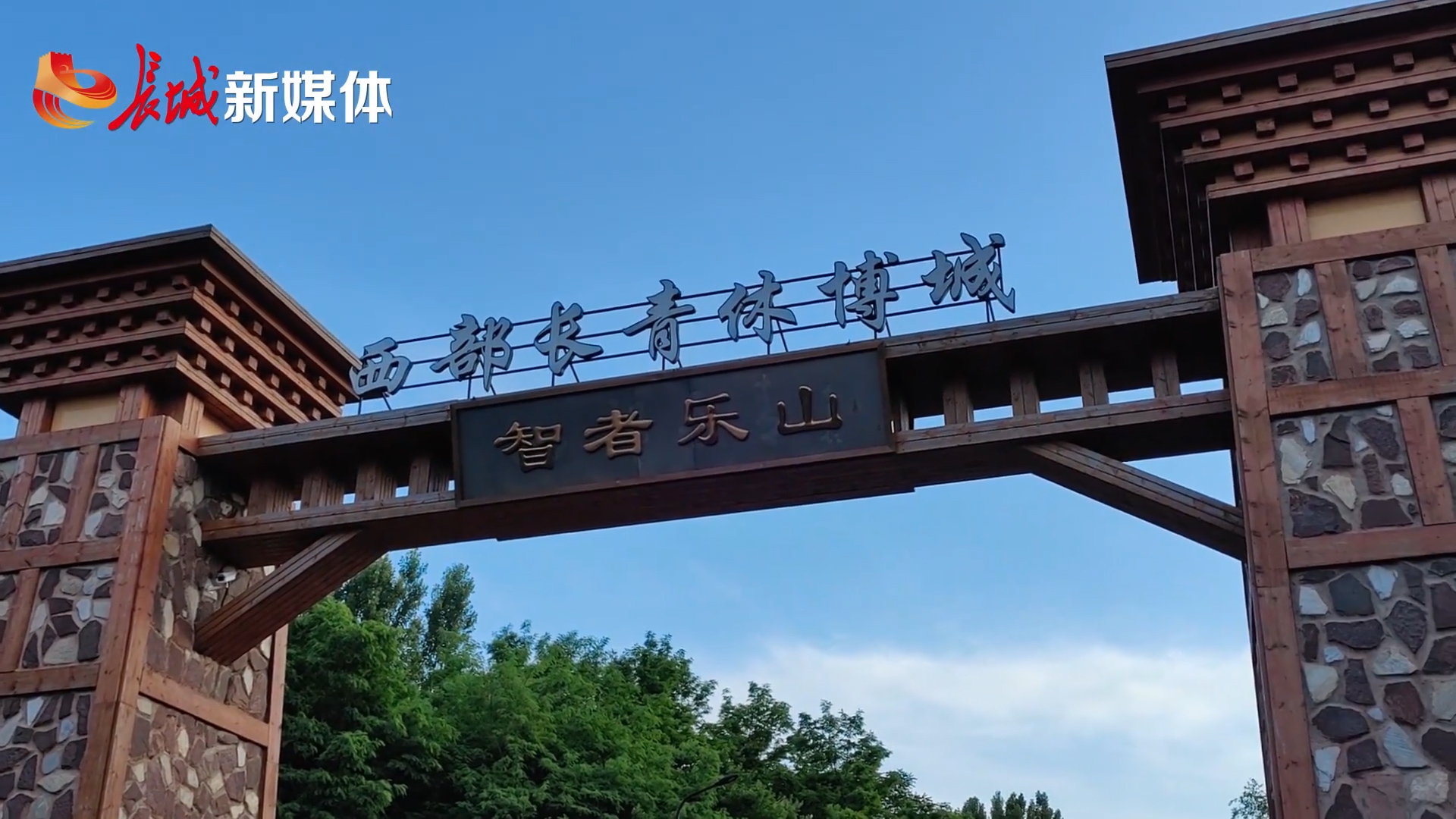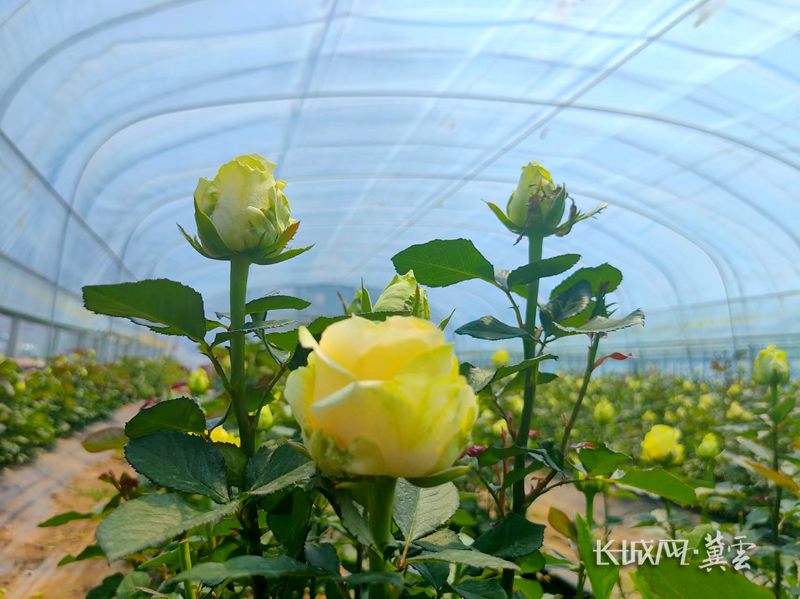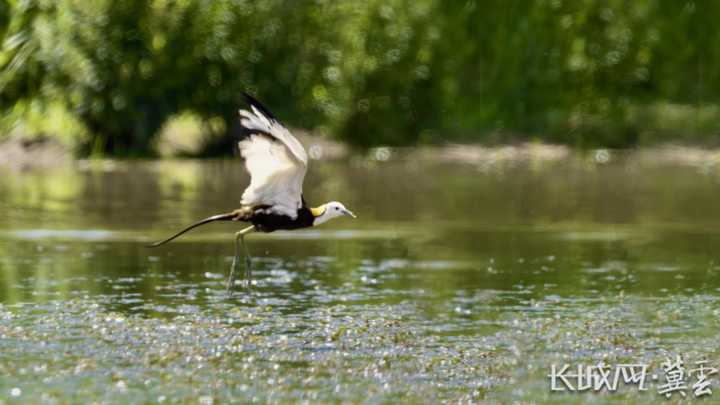秋日的河北塞罕坝机械林场,树木层林尽染,鹿群自由穿梭,让人恍若走进现实版的童话世界。“300年前,这里是清代皇家猎苑木兰围场的中心围场,草木丰美、猎鹿成群。”日前,“林二代”陈继伟告诉记者,“木兰”为满语,意为“哨鹿”,鹿是当时皇帝狩猎的主要猎物。
In autumn, the Saihanba Mechanical Forest Farm in Hebei Province becomes a fairyland, where trees turn into different colors and deer are wandering in leisure. "300 years ago, the place with lush grass and flocks of deer was the central part of the Mulan Hunting Ground of the Qing Dynasty Imperial Court." A few days ago, Chen Jiwei, a second-generation forester, told the reporter that Mulan in Manchu language means whistling deer into a predetermined area and this animal used to be the main hunting prey of the emperors.
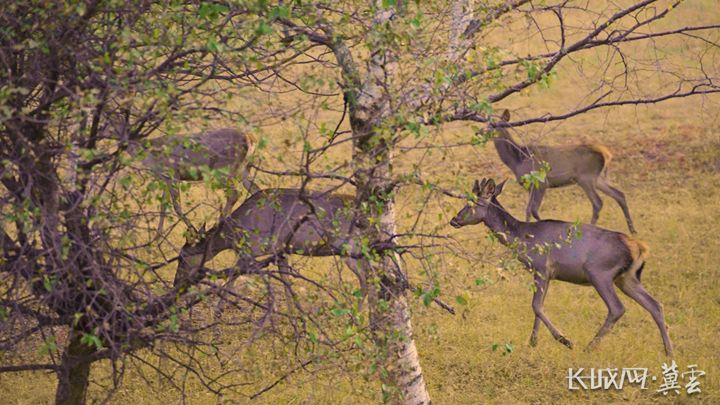
金秋时节的塞罕坝,不时有鹿群在林木间悠闲踱步,给刚刚褪去绿色外衣的百万亩林海注入无限生机。长城网·冀云客户端记者 乔娅 摄
In prime autumn, deer wandering leisurely in woods bring infinite vitality to the vast forest that has just bid farewell to the color of green. Photo by Qiao Ya/Great Wall New Media
陈继伟从小生活在塞罕坝,关于鹿的故事,他是从长辈那里听来的,以前却从没有见过。“我听父亲说,60年前林场刚成立那会,这里全是沙丘,一年得有200多天刮风沙。别说鹿了,啥动物在这都不能活。”他感叹道。
Chen Jiwei grew up in Saihanba, and he learned the stories about deer from his elders. He had never saw deer before. "My father said that 60 years ago when the mechanical forest was first established, the place was all sand dunes, and more than 200 days of a year were sandy and windy. No animals could survive there," he sighed.
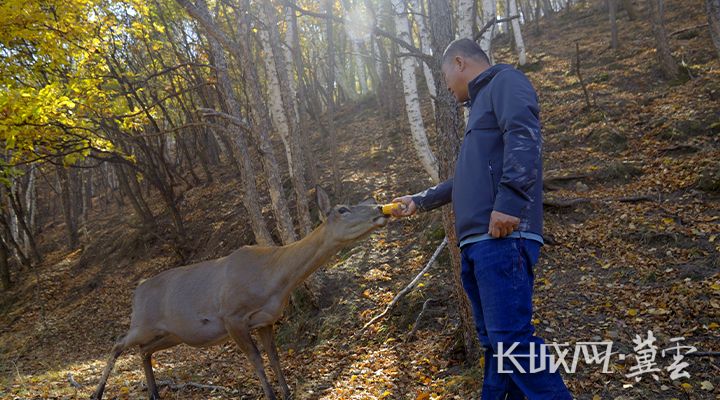
正在塞罕坝林木间觅食的小鹿,看到陈继伟拿着玉米走近,热情地围拢过来。长城网·冀云客户端记者 贺宏伟 摄
The deer foraging in woods immediately came to Chen Jiwei when they saw him approaching with corns in hand. Photo by He Hongwei/Great Wall New Media
塞罕坝位于河北省最北部,在辽金时期被称作“千里松林”,康熙皇帝曾写诗赞誉此地“鹿鸣秋草盛”。从清末开始,因掠夺性的采伐、连年不断的山火和日益增多的农牧活动,到新中国成立前,这里的树木已经被砍伐殆尽,动物也消失了踪迹。
Located in the northernmost part of Hebei Province, Saihanba was famed as a "vast pine forest" during the Liao and Jin dynasties. Emperor Kangxi of the Qing Dynasty wrote a poem, saying the place had bleating deer and lush grass in autumn. Since the late years of the Qing Dynasty, predatory logging, repeated mountain fires and increasing farming and herding activities have virtually eliminated all trees and driven away all wild animals by the time when People's Republic of China was founded in 1949.
“如果奇迹有颜色,那么塞罕坝的绿色就是其中最浓重的一笔。”今年是塞罕坝机械林场建场60周年,营林科科长国志峰自豪地说,自1962年建场以来,一代代塞罕坝人在这片“黄沙遮天日、飞鸟无栖树”的荒漠上,营造出世界上面积最大的人工林,成为生态文明建设的生动范例。
"If miracles have colors, the green color of Saihanba certainly is the brightest one." This year marks the 60th anniversary of the establishment of the Saihanba Mechanical Forest Farm. Guo Zhifeng, head of the Forestry Section, proudly said that since the farm was established in 1962, several generations of Saihanba foresters together have created the world's largest man-made forest in desert, from a place where "yellow sands blotted out the sky and the sun and birds had no trees to roost”. Now, Saihanba has become a vivid example of ecological improvements.
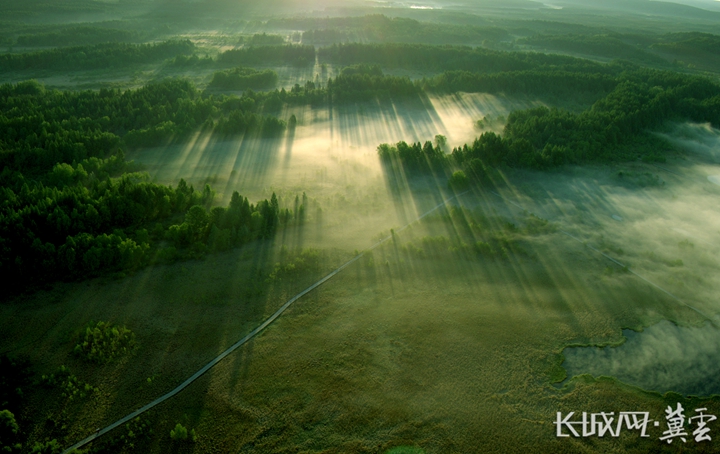
空中俯瞰,塞罕坝就像一块万顷绿毯。很难想象,60年前这里曾是茫茫荒漠。王龙 摄
Looking down from the sky, Saihanba is like a green carpet. It is hard to imagine that 60 years ago it was a vast desert. Photo by Wang Long
如今的塞罕坝,已变成115万亩浩瀚林海。10月中旬,记者跟随国志峰走进了这片失而复得的林海之中,马鹿、狍子、黑琴鸡等野生动物不时闯入视线。据国志峰介绍,党的十八大以来,生态文明建设被提到前所未有的高度,塞罕坝人有了更深刻地领悟,他们努力让人工森林更加接近天然,让森林体质更强壮。“以前林场种的是单一的人工林,间距密集、抗病害能力差。后来逐步改种异龄复层混交林,预计到2030年,混交林比例超过30%,到2050年,混交林比例达到40%。只有形成这种近自然林,林场的整个生态系统才是稳定、健康的。”
Saihanba today has become a vast forest covering 1.15 million mu of land. In mid-October, the reporter followed Guo Zhifeng into this once lost forest, where wild animals such as red deer, roe deer and black pheasant came into view from time to time. According to Guo Zhifeng, ecological improvement has been elevated to an unprecedented height since the 18th CPC National Congress in 2012. The people of Saihanba have a deeper understanding of this strategy. They have done all they can to make this man-made forest stronger and more like a natural one. "Previously, the man-made forest was planted with a single variety of trees, noted for dense spacing and poor disease resistance. Later on, it gradually became a mixed forest with different varieties of trees at different ages. It is expected that the ratio of mixed forest will exceed 30 percent by 2030 and reach 40 percent by 2050. Only when this forest becomes near-natural, the whole ecosystem will be stable and healthy."
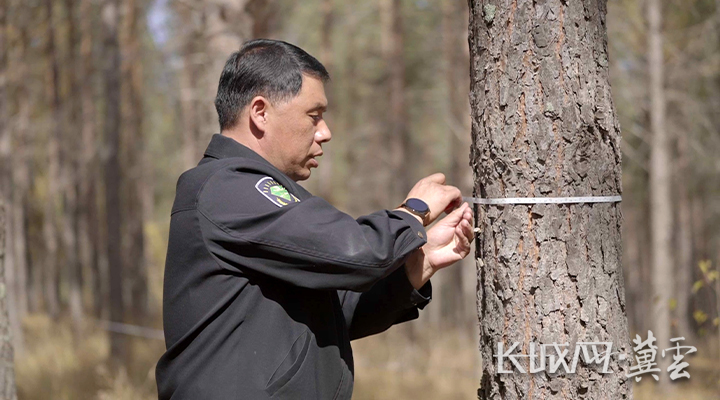
10月中旬,塞罕坝机械林场营林科科长国志峰在林海中观测树木的生长情况。长城网·冀云客户端记者 邓光韬 摄
In mid-October, Guo Zhifeng, head of the forestry section of the Saihanba Mechanical Forest Farm, was observing the growth of trees in the forest. Photo by Deng Guangtao/Great Wall New Media
数据显示,2017年以来,塞罕坝机械林场森林覆盖率从80%增长到82%;每年净化水质和涵养水源达到2.84亿立方米,增长了1倍;固碳从74.7万吨增长到86.03万吨,释放氧气由54.5万吨提升到59.84万吨。塞罕坝森林生态系统更加稳定、健康、优质、高效,成为守护着京津冀生态安全的“绿色长城”。
Data show that since 2017, the Saihanba Mechanical Forestry Farm has seen its forest coverage expanding from 80 percent to 82 percent, its annual water purification and water conservation rising 100 percent to reach 284 million cubic meters, its carbon sequestration growing from 747,000 tons to 860,300 tons, and its oxygen release increasing from 545,000 tons to 598,400 tons. With a more stable, healthy and efficient ecosystem, the Saihanba forest has become a green great wall to ensure the ecological security of the Beijing-Tianjin-Hebei region.
树种增多,疏密有秩,生态向好,也为野生动物繁衍生息提供了更加适宜的环境。“就拿昆虫来说,十几年前我们第一次调查发现的昆虫种类大概有660种,最近做第二次调查时发现昆虫种类已经达到956种。”国志锋说,截至目前,塞罕坝机械林场共有国家一级保护野生动物10种,国家二级保护野生动物39种,河北省重点保护野生脊椎动物43种。
The increasing tree species, the proper spacing and the improving ecology provide a more suitable environment for the wildlife to flourish. "Take insects as an example. The first survey we conducted over 10 years ago identified 660 insect species. But the recent second survey showed 956 species." Guo Zhifeng said that now the forest farm has 10 wild animal specimens being placed under class-I national protection, 39 species under class-II national protection and 43 species under priority provincial protection.
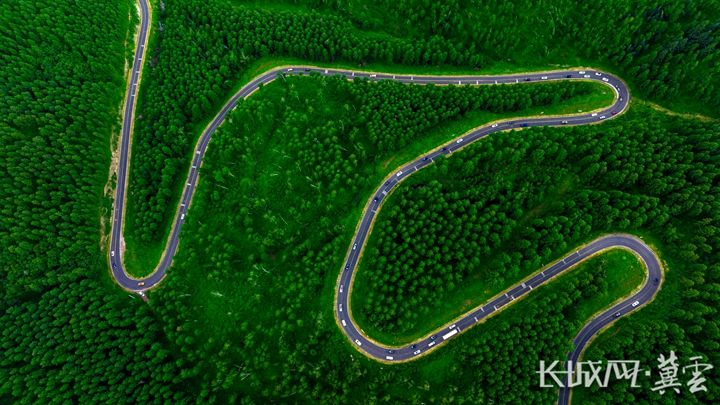
如今的塞罕坝,已成为世界上面积最大的一片人工林海,森林面积115万亩,苍翠连绵。高俊虎 摄
Saihanba today is the largest man-made forest in the world, covering 1.15 million mu of land. Photo by Gao Junhu
当野生鹿群再次回到塞罕坝,种群不断扩大,让陈继伟看到了致富新途径。几年前,他把自己人工饲养的鹿也放归到山林,鹿吃到更新鲜的食物,一个个长得膘肥体壮。“这在以前想都不敢想,三代人努力换来的绿水青山没让人失望。”他笑着说。
From the return of wild deer herds and the expansion of their population, Chen Jiwei found a new way to grow wealth. A few years ago, he released his own captive deer back into the forest. When they had fresher food, they became plumper and stronger. "It was beyond my expectation. The green mountains and lucid waters thanks to the efforts of three generations finally paid off," he said with a smile.
夕阳西下,下坝途中,让人惊艳的晚霞染红了正在道旁小溪觅食的野生鹿群,呦呦鸣声回荡在沟壑间。“林深时见鹿”,李白诗中描绘的生态和谐美景,已在塞罕坝重现。
When we were leaving the forest farm, we saw a group of wild deer foraging by a creek in the sunset glow and their bleating echoing in the gully. The scene of“deer in deep forest”, once depicted by great Chinese poet Li Bai, has reappeared in Saihanba.
Editor: Song Lifang


